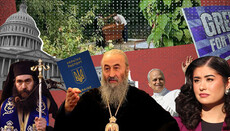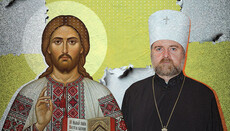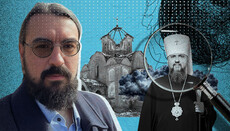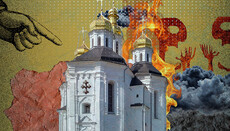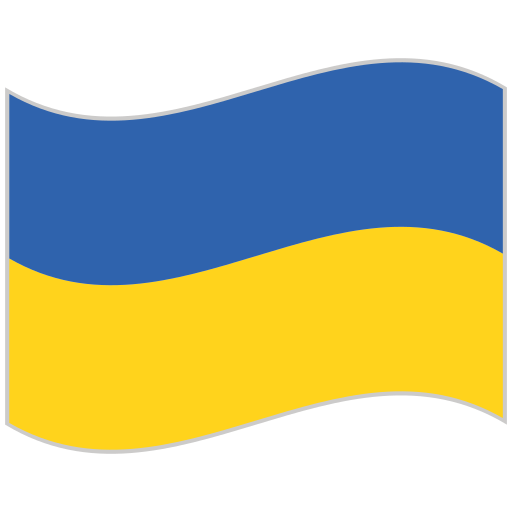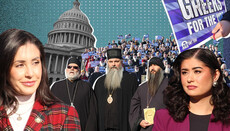UOC declared as affiliated with the ROC: What’s next?
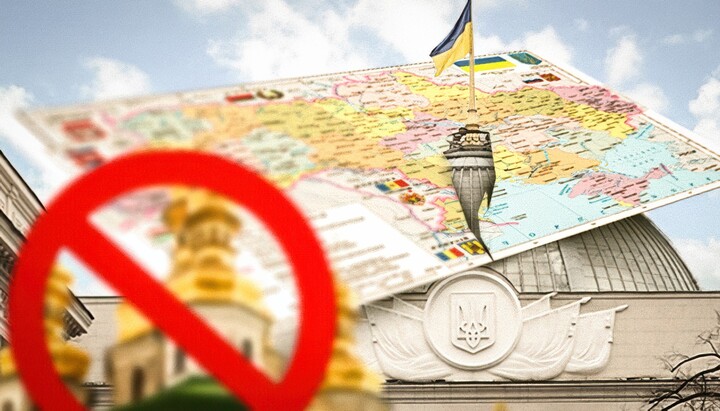
The DESS “study” has identified signs of affiliation between the UOC and the ROC. Let’s analyze the officials’ duplicity and predict what happens next.
On 8 July 2025, the State Service of Ukraine for Ethnopolitics and Freedom of Conscience (DESS) published an order “On identifying signs of affiliation of the Kyiv Metropolis of the Ukrainian Orthodox Church.”
Officials claim they have discovered “signs of affiliation of the Kyiv Metropolis of the Ukrainian Orthodox Church with the Russian Orthodox Church, whose activities are banned in Ukraine.” This was entirely predictable, because the very law banning the UOC (the Law of Ukraine “On Protecting the Constitutional Order in the Activities of Religious Organizations” of 20 August 2024) was drafted so that, with a nod from the Presidential Office, there would be no chance not to declare the UOC affiliated with the ROC. And the UOC would have no chance to defend its position legally. Yes, this law violates the Constitution, but today the Constitution is simply being trampled on – and not just in the religious sphere.
The DESS “study” declared the UOC affiliated with the ROC on the first four criteria out of seven set out in paragraphs 1–4 of Part 2, Article 5-1 of the Law “On Freedom of Conscience and Religious Organizations.” These criteria were added to that article by the UOC-ban law of 20 August 2024. Let’s go through them one by one.
Sign #1
“Expert conclusion”: “The KYIV METROPOLIS OF THE UKRAINIAN ORTHODOX CHURCH as a constituent part of the Ukrainian Orthodox Church is part of (included in) the structure of the Russian Orthodox Church, whose activity in Ukraine is banned...”
The Law phrases this criterion as follows:
“1) a religious organization directly or as a constituent part of another religious organization is included in the structure (is part) of a foreign religious organization whose activity in Ukraine is banned under the Law of Ukraine ‘On Protecting the Constitutional Order in the Activities of Religious Organizations,’ and/or is affiliated with a religious organization that is affiliated with said foreign religious organization.”
This point is vague and poorly defined. It does not specify in what sense one religious organization is part of another – organizationally, legally, canonically, eucharistically, or otherwise. As a result, it opens the door to arbitrary government decisions about which religious organizations are “affiliated” and which are not. And that’s exactly the arbitrariness we see in this “study.”
Quote from the “expertise”: “Thus, the Research Group observes signs of the KM UOC being part of the ROC in that:
- the ‘independence and self-governance’ status granted by the ROC to the UOC did not mean full independence in the sense granted to autocephalous churches by their mother church;;
- a constitutive element of the UOC Statute – the Gramota – establishes that the UOC enters global Orthodoxy ‘through the Russian Orthodox Church’ (in cases when the ROC granted full independence, i.e. autocephaly, there was no such mention);
- the governing bodies of the UOC rejected appeals for independence of the UOC from the ROC;
- the Research Group found no documents of UOC Councils, UOC Bishops’ Councils, or the UOC Holy Synod attesting to the UOC leaving the ROC."
Regarding Patriarch Alexy II’s 1990 Gramota and the idea of the UOC’s link to global Orthodoxy “through” the ROC: this whole notion of one church being “connected to Orthodoxy through another” is a fairly recent construct, unknown to canonical law, which arose simply because there is no universally accepted procedure for granting autocephaly, and there had to be some way to distinguish church autonomy from autocephaly.
By the way, the same OCU, under its statute, is connected with the Local Churches through the Ecumenical Patriarchate. Yet the authorities, for some reason, do not scream that the autocephaly of the OCU is "incomplete" or that it is a part of the Ecumenical Patriarchate. But when it comes to the UOC, the thinking is exactly that.

In general, these terms – autonomy and autocephaly – are not clearly defined in canon law. Both mean independence. The distinction between them is hard to pin down, especially since there are autonomous churches with more rights and independence than some formally autocephalous ones. For example, the Greek Local Churches are in practice dependent on the Ecumenical Patriarchate but are considered autocephalous. The OCU, which calls itself autocephalous, is unequivocally subordinate to the Phanar, as its Tomos explicitly states.
Yet Ukraine as a state takes it upon itself to wade into these subtle canonical issues and decide what is “autonomy” and what is “autocephaly.” Let’s repeat: the UOC is an independent Church, as proven by its statutory documents and the decisions of its Local Council of 27 May 2022.
Legally, the DESS might evaluate its independence in administrative, personnel, economic, and other practical terms – but it has neither constitutional authority nor competence to judge subtle canonical nuances, especially since these questions aren’t even settled within the Church itself. Previously it was written that the UOC was linked to global Orthodoxy through the ROC. That is no longer the case. Now the UOC is connected to Orthodoxy directly. We see no objections from the Local Churches. The canonicity of its hierarchy and clergy is recognized by all without exception. No one accuses the UOC of heresy. So what’s the problem?
As for the claim that the DESS found no documents attesting to the UOC’s exit from the ROC, that is false. The decisions of the UOC Council in Feofania on 27 May 2022 explicitly state: “The Council adopted relevant amendments and changes to the Statute on the Governance of the Ukrainian Orthodox Church, attesting to the full independence and self-governance of the Ukrainian Orthodox Church.”
Moreover, in Metropolitan Onuphry’s Letter to the DESS No. 0464, published on that agency’s own website, it is clearly stated that following the Council in Feofania, the Statute was amended to demonstrate “the full canonical independence of the UOC and its separation from the Moscow Patriarchate.”
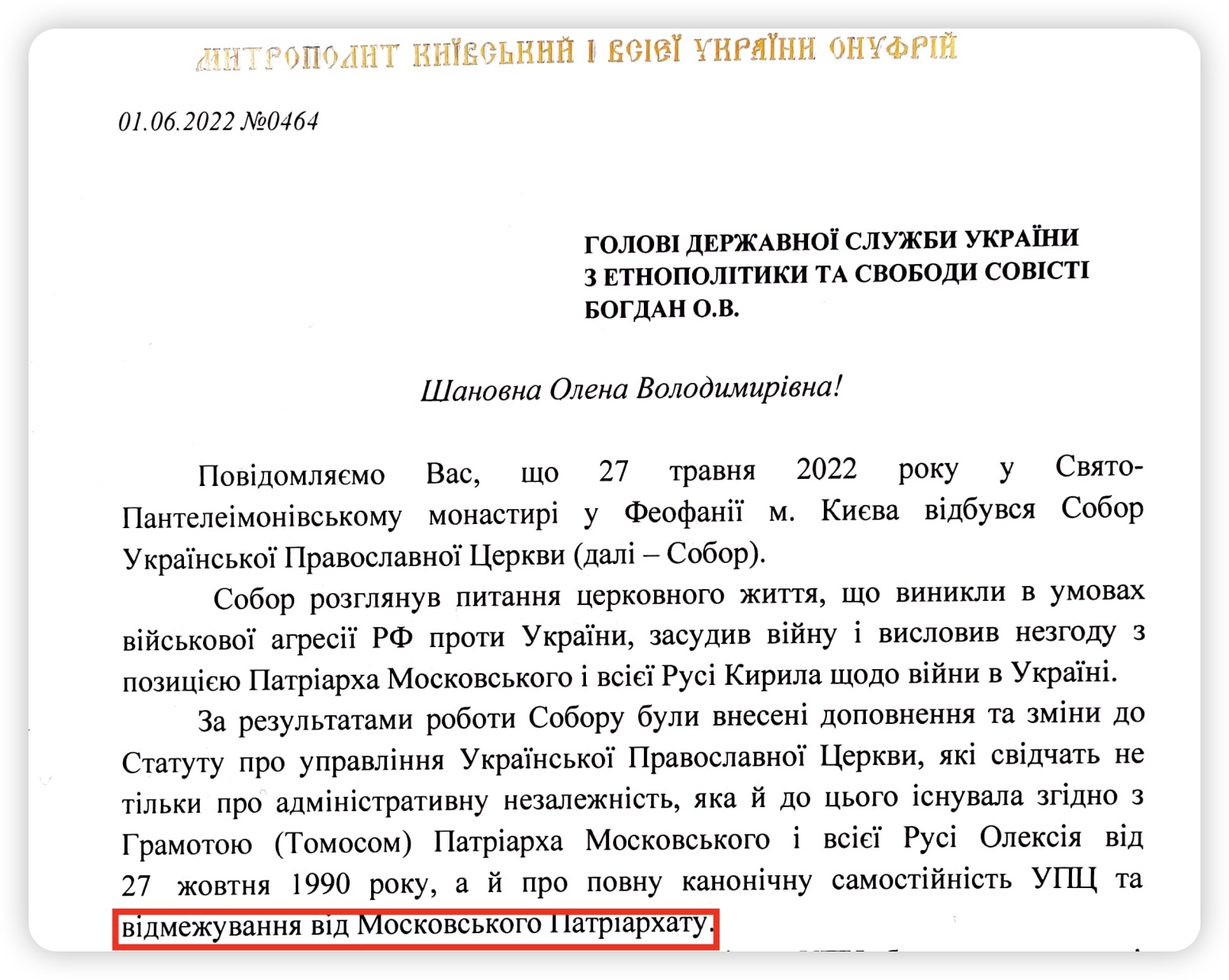
And this is astonishing. Ukrainian officials diligently study the statute of the Russian Church, which they consider almost the embodiment of evil, and ignore Ukrainian documents that are posted on their own website.
The logic is very simple – they examine only what fits the desired outcome. Anything that doesn’t fit the narrative is ignored.
Sign #2
“Expert conclusion”: “In the statute and in documents provided for by the statute of the KYIV METROPOLIS OF THE UKRAINIAN ORTHODOX CHURCH, there are signs of inclusion in the structure of the Ukrainian Orthodox Church, which is affiliated with the Russian Orthodox Church.”
The Law phrases this criterion as follows:
“2) in official documents and/or decisions of governing bodies, and/or in the statute (regulations), and/or in documents provided for by the statute (regulations) of a religious organization operating in Ukraine, there are signs of inclusion in the structure of a relevant foreign religious organization whose activities are banned in Ukraine under Article 3 of the Law of Ukraine ‘On Protecting the Constitutional Order in the Activities of Religious Organizations,’ and/or a religious organization affiliated with said foreign religious organization.”
Here again, DESS officials refer to the Gramota. They claim it contains references to the decisions of the ROC Bishops’ Council, which the UOC is supposedly obliged to follow.
As already mentioned, after the decisions of the UOC Council in Feofania on 27 May 2022, the UOC Statute no longer contains any references to the ROC except for the 1990 Gramota of Patriarch Alexy II on the independence and self-governance of the UOC. You can read more about this Gramota in the article “Passions over Patriarch Alexy II’s Gramota.” In brief, the significance of this document can be likened to a person’s birth certificate. It can be issued in another country, in a country that no longer exists, or in a country that is an aggressor, and so on. But the fact of the document’s existence cannot be undone. It would be like declaring the head of DESS, V. Yelensky, a traitor, collaborator, and imperialist on the grounds that his birth certificate was issued in the USSR.
Moreover, the Primate clearly explained all possible misunderstandings about the Gramota to DESS in Letter No. 0838:
“The wording: ‘The Ukrainian Orthodox Church, united through our Russian Orthodox Church with the One Holy Catholic and Apostolic Church, without a conciliar decision of the entire Orthodox Catholic Fullness, shall not change anything in itself concerning the dogmas of faith and holy canons,’ contains spiritual guidance on observing Orthodox doctrine, but does not provide for any administrative subordination or dependence of the UOC on the ROC. And these are not merely declarative provisions. In practice, this is confirmed by the independence and self-governance of the UOC in making any decisions about church life without coordinating with the ROC. For example, the UOC Holy Synod, which operates in Kyiv, independently establishes dioceses and monasteries, elects and ordains bishops, and appoints abbots of monasteries. It opens UOC parishes abroad. These are among the main signs of a Church’s independence.”
In the same Letter No. 0838, His Beatitude also wrote that after the decisions of the UOC Council on 27 May 2022, “the decisions of ROC Councils are not grounds for the activities of the UOC Bishops’ Council.”
Moreover, DESS officials’ mention of the ROC in older versions of the UOC Statute and other UOC documents cannot be regarded as evidence of affiliation, because the law cannot have retroactive force or apply to legal relations and documents adopted before it came into effect.
Sign #3
“Expert conclusion”: “In the decisions of the Bishops’ Council, the Holy Synod of the Russian Orthodox Church, and in the statute of the Russian Orthodox Church, whose activity in Ukraine is banned under Article 3 of the Law of Ukraine ‘On Protecting the Constitutional Order in the Activities of Religious Organizations,’ there are provisions regarding the right of the governing bodies of the Russian Orthodox Church to make decisions on canonical and organizational issues that are binding for the KYIV METROPOLIS OF THE UKRAINIAN ORTHODOX CHURCH.”
As we can see, the Ukrainian state in its legislative acts relies not on documents of Ukrainian denominations but on the decisions of the aggressor state.
This absurdity was pointed out even during the consideration of the law – by individual Members of Parliament, lawyers, and simply rational people. How can the conclusions of Ukrainian state bodies be based on documents adopted in the aggressor state?
It’s as if Ukrainian government agencies were to recognize the inclusion of Donetsk, Luhansk, Zaporizhzhia, Kherson regions, and Crimea in Russia on the basis of the Russian Constitution. In essence, recognizing the binding nature for Ukraine and its state bodies (which is what DESS has done) of legal acts adopted in the aggressor state can be regarded as treason.
Why the Security Service of Ukraine and other law enforcement agencies pay no attention to this – is unclear.
In concluding that the UOC is affiliated on this criterion, DESS listed all the provisions of the ROC Statute regarding the UOC but also committed outright lies. Specifically: “‘The UOC receives holy chrism from the Patriarch of Moscow and All Russia.’”
The question of resuming chrism production was addressed by the UOC Council in Feofania on 27 May 2022. Since November 2022, the UOC has been making holy chrism independently.
Sign #4
“Expert conclusion”: “Decisions of the Bishops’ Council of the Russian Orthodox Church and the statute of the Russian Orthodox Church, whose activity in Ukraine is banned under Article 3 of the Law of Ukraine ‘On Protecting the Constitutional Order in the Activities of Religious Organizations,’ provide for the mandatory inclusion of leaders of the KYIV METROPOLIS OF THE UKRAINIAN ORTHODOX CHURCH in the statutory governing bodies of the Russian Orthodox Church.”
This is also false.
First, DESS made this claim based on the ROC Statute and its official website, where His Beatitude Metropolitan Onuphry is listed as a ROC hierarch and permanent member of the ROC Synod. In other words, they used sources from the aggressor state and on that basis violated the constitutional rights of believers, citizens of Ukraine. If that isn’t treason, what is?
Second, there is an official letter from Metropolitan Onuphry to DESS in which he clearly states that he is not a member of the ROC Holy Synod. And again, this document is published on the State Ethnopolitics website, but officials at that agency simply “don’t see” it.
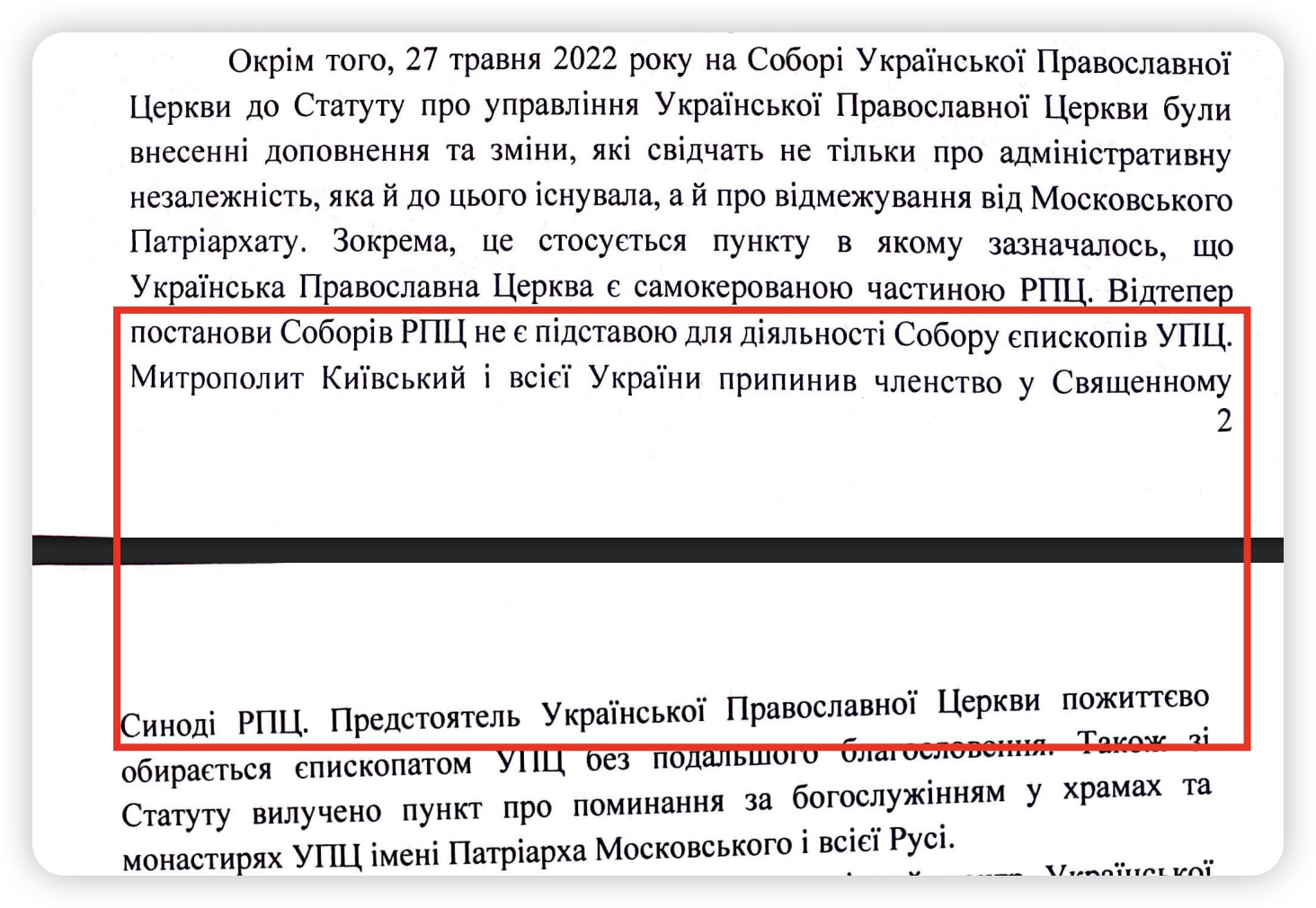
Screenshot of Metropolitan Onuphry’s Letter to DESS No. 0838. Photo: DESS website
Thus, the entire “study” by DESS is woven from lies, the use of documents from the aggressor state, and deliberate manipulations. It has nothing to do with genuine expert activity and is a rather crudely executed political order from the Ukrainian authorities.
Moreover, let’s note that the DESS researchers are ordinary bureaucrats with no religious or theological education. The group included:
- Voynalovych V.A., First Deputy Chair, Chair of the Group;
- Kochubey V.Yu., Deputy Head of the Department for Religious Affairs, Secretary;
- Horshkov V.V., Head of the Department for Religious Affairs;
- Krasiy V.V., Head of the Department of Legal Support and Legal Analysis;
- Khaustova M.E., Head of the Administrative Services Department, member of the Research Group.
They have no competence – and therefore no right – to examine questions of canon law. It’s as if research in molecular biology were being carried out by the janitor, the accountant, and HR staff of a lab.
What сomes next?
According to the plan of V. Yelensky and other persecutors of the Church, everything is meant to unfold strictly according to the logic laid out in the law banning the UOC. First comes the recognition of the Kyiv Metropolis of the UOC as affiliated with the ROC. This “study” is only the first step on that path.
DESS must still issue formal instructions ordering the UOC to “eliminate the violations” before it can even go to court to seek an outright ban. This will take some more time. After that, DESS will begin conducting “expert assessments” of each diocese for signs of affiliation with the Kyiv Metropolis of the UOC. Proving that will be even easier. Based on that affiliation, entire dioceses will be banned. Then will come the turn of parishes and monasteries.
At every stage of this process, there will be one simple and convenient escape offered – betrayal. That is, joining the OCU.
This is how the authorities hope to destroy the UOC completely.
It is worth noting the remarkable “coincidence” between the release of this “expert report” and the stripping of His Beatitude Metropolitan Onuphry’s Ukrainian citizenship. Can this really be called a coincidence? No – it cannot. These are links in a single chain stretching all the way back to the Presidential Office.
One cannot fail to see the Providence of God, which in these extremely difficult times has placed at the head of the UOC Metropolitan Onuphry – a true Christian, a man of prayer, a genuine archpastor, with unquestioned authority throughout the world, in whom millions of believers in Ukraine trust and around whom they unite.
The actions of the Ukrainian authorities today are strikingly reminiscent of events in Moscow a century ago, when the Bolsheviks arrested Patriarch Tikhon and threw him in prison, while the “Renovationists” set up their so-called “Higher Church Administration” and declared the saintly patriarch deposed. They were desperate to remove him, because they understood perfectly well that the faithful were uniting precisely around him.
The Bolsheviks’ plan failed. And the plan of these neo-Bolsheviks will fail too.
The means of defending the rights of the Church are far from exhausted. And God may have an entirely different vision of our future than anything we can imagine.
The most important thing is to keep ourselves within the Church – and Christ Himself will care for His Church.

